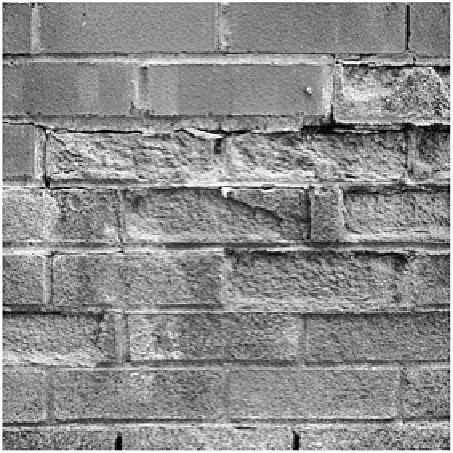Environmental Engineering Reference
In-Depth Information
Plate 13.3
'Geological controls' in a garden retaining wall.
Sub-zero air temperatures draw water through porous bricks
to a freezing plane at their outer surface, causing frost
weathering. Impervious engineering bricks are undamaged
and mortar courses exert an additional structural control.
Photo: Ken Addison.
porosity; the latter determine circulation networks for ground water and air
(permeability). Continuing access to rock is essential, and weathering enhances it further
by enlarging fractures and voids,
leaching
(chemical flushing) solutes and by the
eluviation
(physical washout) and mass wasting of debris. Initial fragmentation by
mechanical weathering
may be important because it greatly enlarges exposed surface
area as a prelude to
chemical weathering
. However, climate stimulates
hydrothermal
alteration
of rock and temperature, and moisture regimes exert a strong influence on
weathering rates and styles. Climate restricts chemical weathering by aridity whilst
enhancing it at higher temperatures in humid conditions (Figure 13.7).
PHYSICAL WEATHERING
Overcoming tensile strength is central to weathering and one of the more spectacular
ways in which it occurs is through
elastic strain release
. This is sometimes described as
pressure release and causes much confusion.

